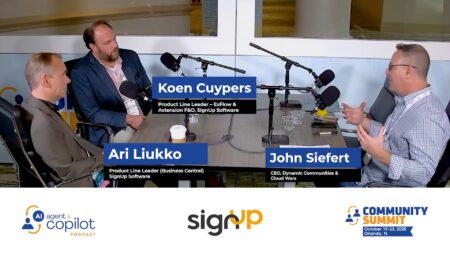As a mid-market manufacturer CIO, I ask three questions to determine which technology initiatives will help our company grow, increase profits, and deliver a competitive advantage. The questions are in the table below, along with a column for the group that will receive the main benefit from the technology (“Beneficiary”), as well as one for the overall “Goal.”
| Question | Beneficiary | Goal |
| How will it help improve the customer experience? | Customers | Brand Promise |
| How will it help our workers do more with less? | Employees | Efficiency |
| How will it help us improve our relationship with our partners (vendors, managed service providers, etc)? | Partners | Supply Chain Optimization |
The questions can get much more granular and cover many more specific goals, but the point is that most major technology initiatives can be evaluated on a simple scale that helps to make the case for whether it is right for our company at this time. And once we’ve decided to pursue an initiative, this approach has another, important purpose: It helps us know which group we should enlist as a co-creation partner.
What Is Co-Creation?
There are many definitions of co-creation, but the one I found to be most helpful comes from global strategy and innovation firm Fronteer:
The collaborative process of creating new value together with external experts and stakeholders.
For our purposes, “external” need not mean external to your company, but could be external to your information technology (IT) organization.
Some other co-creation definitions emphasize that the co-creation partner plays a part in the process “from beginning to end.” That timeframe is what differentiates co-creation from collaboration. Collaboration could mean any level of cooperation at some point in the project, but co-creation means that you are building something together, for the project’s duration.
Successful Co-Creation Examples
I’d like to share two examples of how co-creation has worked for me and my company. Although your company may have different challenges and goals, these examples can still illuminate the way co-creators can help you meet them.
Project: Client Analysis Toolkit
Co-Creation Partners: Customers, Partners, Employees
Our company manufactures stretch film. Our value proposition is that our film is thinner and stronger than any other manufacturer’s film. We sell our product primarily through distributors. One challenge in pitching our products is that our products cost more “per pound” than our competitors; however, it takes less of our product to achieve the same results as theirs.
Imagine if there were an automobile fuel that cost 10% more, but got 50% better gas mileage. You’d need a way to market that fuel based on the “cost per mile” rather than the “cost per gallon”. We needed a way to show “cost per pallet wrapped” vs. our competition, rather than focusing on the apples-to-oranges comparison of “cost per pound of plastic wrap.”
So, we developed a client analysis toolkit that contains cloud-based mobile tools that allow our independent sales reps (or the sales reps that work for our distributor customers) to perform tests that determine how much of our product it takes to wrap a customer’s pallet for transportation versus how much of our competitor’s product it takes. Then, based on a few questions they ask the potential customer, the reps can produce a report that shows how much money our product will save the customer per year. But that’s not all. The report also shows how using less plastic will result in less landfill waste; less electricity to produce the product; and, ultimately, less impact on the carbon footprint, which can be a game-changer for customers with sustainability goals.
This project could not have been accomplished without working closely with our partners (sales reps, software developers) from beginning to end to deliver a solution that delivers measurable results.
Project: Price Management Toolkit
Co-Creation Partners: Employees, Partners
As I mentioned, our company manufactures stretch film. And while we need our sales and marketing to help the customer focus on value, the fact is that in this industry, the product is sold on a price-per-pound basis, just like auto fuel is sold based on a price per gallon. The challenge for us is that, unlike auto fuel prices, our prices differ based on the product specifications, the amount of bought product, rebate agreements, and various national and regional negotiations.
The result is that the answer to “How much does this product cost?” is complicated and requires a complex data set and rules to determine. Combine that with periodic changes in the cost of raw materials (they go up and down as often as monthly), and we end up with a system that must maintain hundreds of thousands of price combinations.
We engaged with an outside partner that provides price management and optimization consulting services and already had a platform for managing and analyzing price data. We worked with them to develop a system that brings the best of what they already had developed together with our ideas and technology. It would have taken much longer to try to develop something like this completely in-house, and we would not have had the benefit of the partner’s years of experience helping other companies with pricing challenges.
The result is a system that is tightly integrated with our other internal systems and that meets all our customer and industry needs. It couldn’t have been done without a co-creation approach that involved our employees, and this valuable partner.
Closing Thoughts
There are many more cases of beneficial co-creation for our manufacturing company, in addition to the two great examples above. For instance, our participation in crowd-sourced, software development-tool projects. Those are kind of a reverse co-creation, where we are the customers, and the software developers have included us in the co-creation of their products. As a result, we had design input to ensure that their product would meet our needs. In the end, such co-creation delivered both a better product for software developers and a better toolkit for us.
Register here for your on-demand pass to view all content from Partners Ecosystem Digital Summit. The digital event, which took place on April 20, focused on analyzing the business and IT imperatives around cloud, AI, automation, data modernization, and cybersecurity that define the future of partnerships.
Want more tech insights for the top execs? Visit the Leadership channel:










